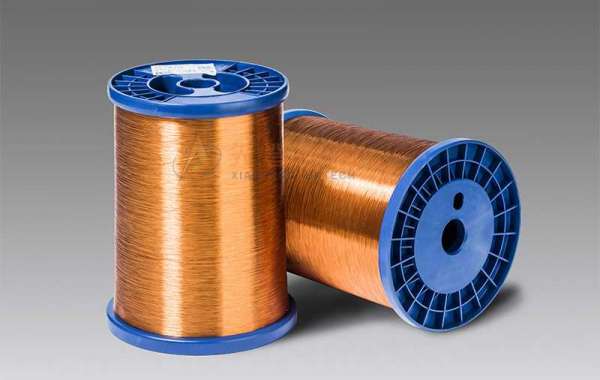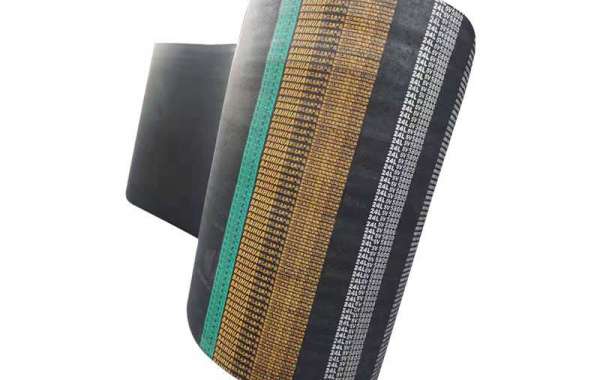1. pay off
On the enameled wire in normal operation, most of the operator's energy and physical strength are consumed in the pay-off part. The replacement of the pay-off reel requires the operator to pay a lot of labor, and the joints are prone to quality problems and operational failures when changing the wires. An effective method is to pay off with large capacity. The key to paying off is to control tension. When the tension is large, it will not only make the conductor thinner and make the surface of the wire lose its brightness, but also affect many properties of the enameled wire. From the appearance point of view, the thinned enameled wire has poor gloss; from the performance point of view, the elongation, resilience, flexibility, and thermal shock of the enameled wire are all affected. If the pay-off tension is too small, the line will easily jump, causing the line to merge and the line to hit the furnace mouth. When paying off, the most fearful thing is that the half-turn tension is high and the half-turn tension is small. This will not only cause the wires to loosen, break, and become thinner one by one, but also cause the wires to jump greatly in the oven, resulting in failure of wire bonding and wire touching. Pay-off tension should be even and appropriate. Installing a booster wheel in front of the annealing furnace is very helpful for tension control. The maximum non-elongation tensile force of soft copper wire at room temperature is about 15kg/mm2, the maximum non-elongation tensile force at 400℃ is about 7kg/mm2; the maximum non-tensile tension at 460℃ is 4kg/mm2; the maximum non-tensile tension at 500℃ It is 2kg/mm2. In the normal enameled wire coating process, the tension of the enameled wire is significantly less than the unstretched tension, which is required to be controlled at about 50% and the pay-off tension at about 20%. Non-stretching tension.
Large-size and large-capacity spools generally use radial rotation pay-off; the center line generally uses an over-head or brush-type pay-off; fine lines generally use a brush-type or double-cone pay-off.
No matter what pay-off method is used, there are strict requirements on the structure and quality of the bare copper wire reel. The surface should be smooth to ensure that the round enameled wire are not scratched. The two sides of the shaft and the inside and outside of the side plate have r angles with a radius of 2-4mm. Ensure that the wire can be paid out evenly during the wire-off process. After the valve core is processed, a dynamic and static balance test must be carried out. The brush pay-off device requires the diameter of the shaft core: the diameter of the side plate is less than 1:1.7; the excessive pay-off requirement is less than 1:1.9, otherwise the line will be broken when the line is paid to the shaft core.
2. Annealing
The purpose of annealing is to heat the wire that is hardened by the lattice change during the drawing process of the mold to a certain temperature, so that the molecular lattice is rearranged to restore the softness required by the process, and to remove the residue on the metal wire. The surface of the conductor during stretching. Lubricants, oil stains, etc. make the wire easy to paint and ensure the quality of the enameled wire. The most important thing is to ensure that the copper magnet wire has the appropriate softness and elongation when used as a winding, while helping to improve conductivity.
The greater the deformation of the conductor, the lower the elongation and the higher the tensile strength.
There are three commonly used copper wire annealing methods: coil annealing; continuous annealing on the drawing machine; continuous annealing on the enameling machine. The first two methods can not meet the requirements of the enamel process. Coil annealing can only soften the copper wire, and the degreasing is not complete. Since the wire becomes soft after annealing, the degree of bending increases when the wire is laid. Continuous annealing on the wire drawing machine can achieve the softening of the copper wire and remove the surface grease, but the soft copper wire is wound on the reel, and a lot of bends are formed after annealing. Continuous annealing before painting on the enamelling machine can not only achieve the purpose of softening and degreasing, but also the annealed wire can be straight and directly enter the painting device to coat a uniform paint film.
The temperature of the annealing furnace should be determined according to the length of the annealing furnace, copper wire specifications, and line speed. At the same temperature and speed, the longer the annealing furnace, the more fully recovered the conductor lattice. When the annealing temperature is low, the higher the furnace temperature, the better the elongation, but when the annealing temperature is high, the opposite phenomenon will occur.








